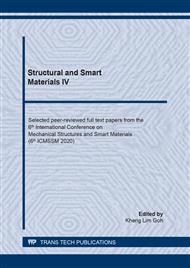p.126
p.131
p.139
p.148
p.157
p.164
p.173
p.181
p.187
Effects of Heat Accumulation on Temperature Field during Multi-Track Laser Cladding of Preset MCrAlY Coating
Abstract:
To investigate influences of multi-track overlapping on melting of preset MCrAlY coating during laser cladding plasma spraying, a three-dimensional finite element model of the continuously moving temperature field during multi-track laser cladding was constructed using the ANSYS parametric design language (APDL) based on the existing temperature field model during single-track laser cladding. According to analysis results of temperature field, temperature of samples increases gradually during laser cladding due to heat accumulation effect of laser scanning, and the molten pool expands gradually. There are evident differences among different scanning pathways. Therefore, it is impossible to get high-quality cladding coating with uniform melting and small dilution ratio. Molten pools with basically same sizes in different scanning pathways can be gained by decreasing laser power or increasing scanning speed in different tracks one by one. Similarly, differences of molten pools in different scanning pathways can be relieved effectively through preheating of samples. Through a closed-loop control over the highest cladding temperature, a more even cladding coating can be gained through adaptive control of laser power and / or scanning speed.
Info:
Periodical:
Pages:
157-163
Citation:
Online since:
February 2021
Authors:
Price:
Сopyright:
© 2021 Trans Tech Publications Ltd. All Rights Reserved
Share:
Citation:


